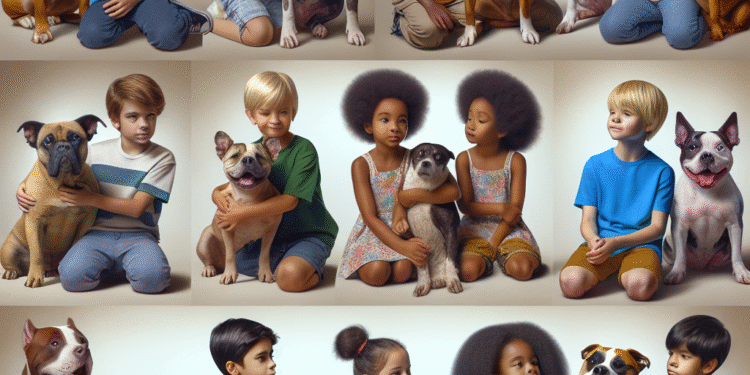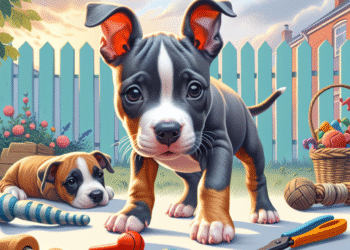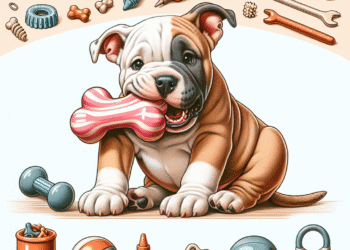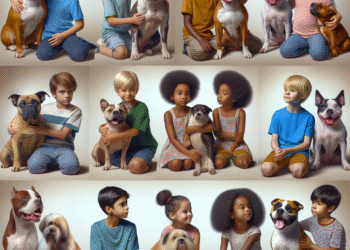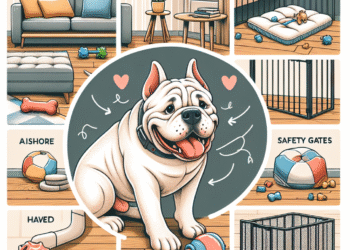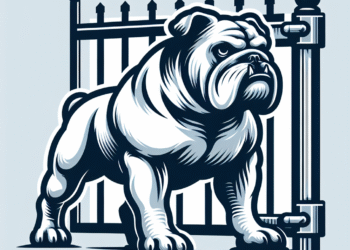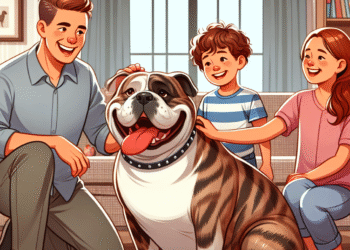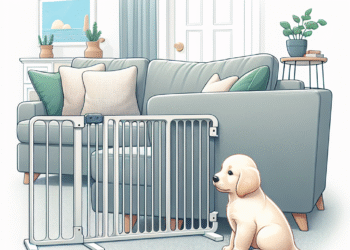When it comes to selecting a family pet, many parents encounter a dilemma: Are bully breeds, like the American Pit Bull Terrier, American Bulldog, or Staffordshire Bull Terrier, safe around children? This article aims to explore the dynamics between bully breeds and children, weighing the pros and cons to determine if they are a perfect match or a risky combination.
Understanding Bully Breeds
Bully breeds are often characterized by their muscular build, blocky heads, and strong jaws. Unfortunately, these traits have contributed to a negative stereotype, painting them as aggressive or dangerous dogs. However, breed predispositions don’t necessarily determine an individual dog’s temperament. Factors like genetics, socialization, training, and environment play critical roles in shaping a dog’s behavior.
The Myths and Realities
-
Myth: All Bully Breeds are Aggressive
Reality: Aggression is not inherent in bully breeds; rather, it stems from a lack of socialization, neglect, or abusive training. Many bully breeds are incredibly affectionate and thrive on human interaction. - Myth: Bully Breeds are Not Good with Kids
Reality: Many families have lived harmoniously for years with bully breeds. With proper training and socialization, these dogs can be gentle playmates for children.
The Benefits of Bully Breeds with Kids
When properly well-trained and socialized, bully breeds can offer many benefits to families with children:
-
Loyal Companionship
Bully breeds are known for their loyalty and protective nature. They form strong bonds with their families and can be excellent watchdogs, ensuring the safety of children. -
Affectionate Nature
Contrary to popular belief, bully breeds are often incredibly affectionate. They love cuddling and playing, making them fulfilling companions for kids. -
Playful Personalities
Many bully breeds are high-energy dogs that love to play. Their playful nature can keep children entertained and active. - Therapeutic Benefits
Studies have shown that pets, including bully breeds, can improve children’s mental health by providing emotional support, reducing anxiety, and fostering responsibility.
Risks and Considerations
Despite the many positive attributes, there are risks associated with having bully breeds around children:
-
Size and Strength
Bully breeds are muscular and strong. Their enthusiasm during playtime can inadvertently lead to rough interactions that could hurt smaller children. -
Miscommunication
Children may not understand dog behavior well, leading to situations that stress the dog. For instance, hugging or pulling on a dog’s ears may provoke an adverse reaction if the dog feels threatened. -
Socialization Requirements
Proper training and socialization are crucial. Families must commit to socializing their dog with children and other animals early on to mitigate risks. - Public Perception
Bully breeds often face social stigma, and parents may stress about negative perceptions from others. Educating the community about the dog’s temperament and ensuring responsible behavior can help.
Best Practices for Families
To create a harmonious environment with bully breeds and children, here are several best practices:
-
Choose the Right Breed
Research specific bully breeds and their temperaments. Some breeds may be more suitable for family life than others. -
Early Training and Socialization
Enroll your dog in obedience classes and expose them to different environments, people, and other animals from a young age. -
Supervision is Key
Always supervise interactions between dogs and young children to prevent any mishaps. Teach children how to behave around dogs, emphasizing respectful interaction. -
Create a Safe Space
Ensure your dog has a safe area where they can retreat if they feel overwhelmed or stressed. This allows the dog to decompress and minimizes potential conflicts. - Educate Your Family
Teach your children about dog behavior and how to interact safely. Understanding canine body language is essential in preventing misunderstandings.
Conclusion
Bully breeds can make excellent family pets when given the right environment, training, and love. While there are challenges to consider, many families enjoy fulfilling relationships with these dogs. By taking the necessary precautions and prioritizing responsible pet ownership, bully breeds and children can indeed be a perfect match. Ultimately, each dog is an individual, and fostering a safe atmosphere can lead to a thriving dynamic between bully breeds and children.


